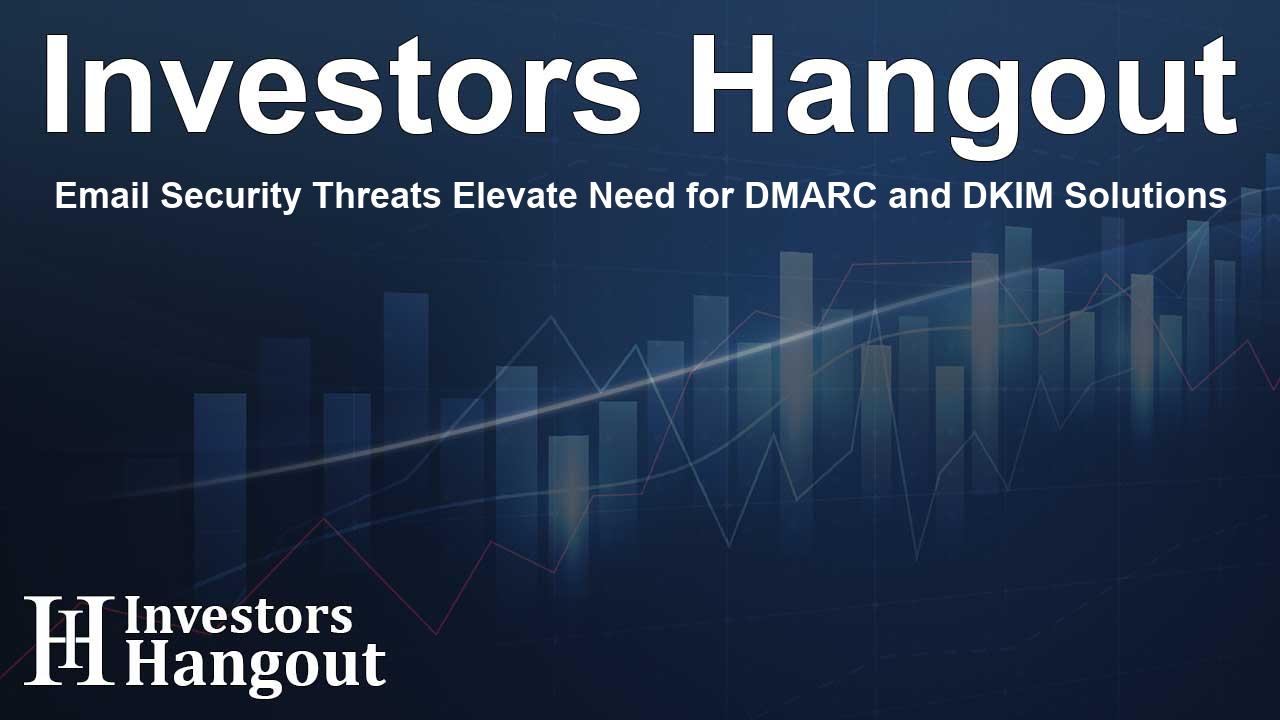Email Security Threats Elevate Need for DMARC and DKIM Solutions

Understanding the Rising Threat of Email Cyberattacks
Email cyberattacks are increasingly becoming a significant concern for organizations worldwide. Recent reports indicate that such attacks are among the top complaints filed with authorities. In response, companies are urged to adopt advanced protocols like DMARC and DKIM to bolster their cybersecurity defenses and protect sensitive information.
The Importance of DMARC and DKIM
According to the experts at eMazzanti Technologies, a reputable Managed Services Provider, implementing Domain-based Message Authentication, Reporting, and Conformance (DMARC) along with DomainKeys Identified Mail (DKIM) forms the cornerstone of effective email security. These protocols work in tandem to ensure the authenticity of emails and protect organizations from impersonation and phishing schemes that can jeopardize their operations.
Key Functions of DMARC and DKIM
DMARC and DKIM are designed to enhance email security. DKIM employs cryptographic signatures to verify the origin of emails, providing assurance that a message has not been altered during transit. Meanwhile, DMARC enables organizations to set policies for handling emails that fail authentication checks, ensuring that only legitimate communications reach their recipients. This dual-layered approach not only protects organizations but also helps maintain their reputation by preventing domain spoofing.
Impact of Inadequate Email Security
Organizations must recognize the broader implications of email security breaches. The ramifications of an email compromise can lead to severe financial losses, reputational damage, and compliance issues. Investing in robust email authentication mechanisms is a proactive measure that can save companies from potentially devastating consequences.
Email as the Primary Attack Vector
eMazzanti Technologies emphasizes that email remains the primary attack vector for cybercriminals targeting businesses. The CEO stresses that for organizations committed to safeguarding their data and overall integrity, implementing DMARC and DKIM is not an option but a necessity. These measures are fundamental components of any modern cybersecurity strategy.
The Need for a Layered Security Approach
While DMARC and DKIM offer significant benefits, eMazzanti Technologies points out that no single security control can guarantee complete protection. A layered security strategy is crucial for maximum efficacy. This includes combining DMARC and DKIM with additional measures such as endpoint protection, network segmentation, security training for employees, multi-factor authentication, and ongoing monitoring of security systems.
Challenges for Small and Medium-Sized Businesses
Small and medium-sized enterprises face the same risks as larger organizations yet often lack the resources required to implement effective security measures. Managed Services Providers can help bridge this gap by providing access to comprehensive, enterprise-level security solutions, enabling these businesses to protect against evolving threats.
The Need for Continued Vigilance in Cybersecurity
As email threats continue to evolve, organizations must remain vigilant in their cybersecurity efforts. Implementing protocols like DMARC and DKIM is essential to forming a defense that can mitigate risks effectively. Without these foundational protections, companies expose themselves to avoidable attacks, compromising not just data but also trust with their stakeholders.
About eMazzanti Technologies
eMazzanti Technologies boasts a team of IT professionals dedicated to offering rapid response and elevating growth through secured data and increased productivity. The firm provides various services including cloud solutions, network management, 24/7 support, and comprehensive cybersecurity assessments.
The company has garnered numerous accolades for its outstanding service, appearing eleven times on the Inc. 5000 list of the fastest-growing privately held companies and being recognized by Microsoft as an exceptional partner.
Frequently Asked Questions
What are DMARC and DKIM?
DMARC and DKIM are email authentication protocols designed to verify the legitimacy of email senders, preventing phishing and email spoofing attacks.
Why is email security important for businesses?
Email security is crucial as it protects sensitive information and helps maintain the organization’s reputation by preventing unauthorized access and data breaches.
How do DMARC and DKIM work together?
DMARC establishes policies for handling emails that fail authentication checks, while DKIM uses cryptographic signatures to validate email origins.
Can small businesses afford these email security measures?
Yes, many Managed Services Providers offer scalable solutions that allow small and medium-sized enterprises to implement effective email security without large investments.
What are the consequences of inadequate email security?
Inadequate email security can lead to financial losses, reputational harm, and compliance penalties, making proper protection imperative for businesses.
About The Author
Contact Logan Wright privately here. Or send an email with ATTN: Logan Wright as the subject to contact@investorshangout.com.
About Investors Hangout
Investors Hangout is a leading online stock forum for financial discussion and learning, offering a wide range of free tools and resources. It draws in traders of all levels, who exchange market knowledge, investigate trading tactics, and keep an eye on industry developments in real time. Featuring financial articles, stock message boards, quotes, charts, company profiles, and live news updates. Through cooperative learning and a wealth of informational resources, it helps users from novices creating their first portfolios to experts honing their techniques. Join Investors Hangout today: https://investorshangout.com/
The content of this article is based on factual, publicly available information and does not represent legal, financial, or investment advice. Investors Hangout does not offer financial advice, and the author is not a licensed financial advisor. Consult a qualified advisor before making any financial or investment decisions based on this article. This article should not be considered advice to purchase, sell, or hold any securities or other investments. If any of the material provided here is inaccurate, please contact us for corrections.
